The Economics and Statistics Division maintains archives of previous publications for accountability purposes, but makes no updates to keep these documents current with the latest data revisions from Statistics Canada. As a result, information in older documents may not be accurate. Please exercise caution when referring to older documents. For the latest information and historical data, please contact the individual listed to the right.
<--- Return to Archive
For additional information relating to this article, please contact:
May 31, 2024COMPENSATION OF EMPLOYEES, Q1 2024 Quarter-over-quarter (Q1 2024 vs Q4 2023, seasonally adjusted)
Total compensation of employees for all industries increased by 2.2% in Nova Scotia, second fastest growing among provinces, rising to $8.18 billion in Q1 2024. National employee compensation was up 1.5% in the first quarter of 2024. All provinces recorded quarter over quarter gains in employee compensation with the fastest growth in Prince Edward Island and the slowest growth in Manitoba.
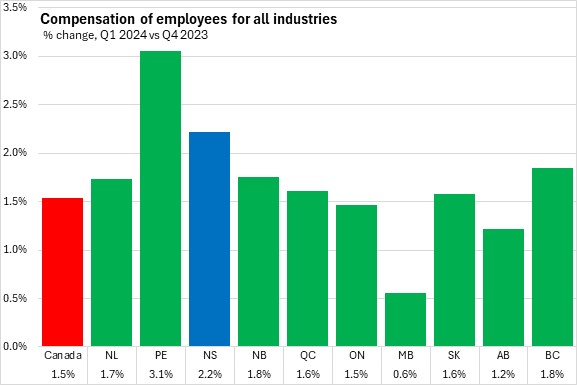

Year-over-year (Q1 2024 vs Q1 2023)
Nova Scotia's employee compensation for all industries was up 9.5% in Q1 2024 when compared to Q1 2023. National employee compensation grew 6.1%. All provinces recorded year-over-year gains in employee compensation during the first quarter. The fastest increase was reported in Nova Scotia, while the slowest rise was in Saskatchewan.
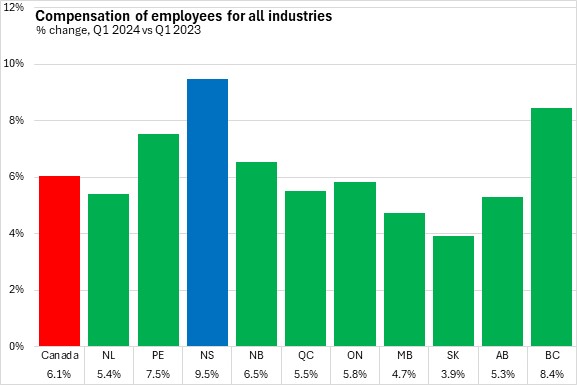
Year-over-year growth in total wages and salaries by industry show that the strongest contributions to rising payrolls came from the professional and personal services industries followed by health care/social assistance (which includes daycare). Wage and salary totals were down only for mining/oil/gas industries.
In percentage terms, information/culture and agriculture/forestry/fishing reported the fastest gains in Nova Scotia over this period. Only mining/oil/gas reported a decline for the period.
Note that changes in employee compensation reflect changes in wages and salaries as well as changes in contributions to social insurance. Changes in wages and salaries include the effects of changing numbers of employees, changing hours worked and wage rates as well as effects from differences in pay period from one year to the next.
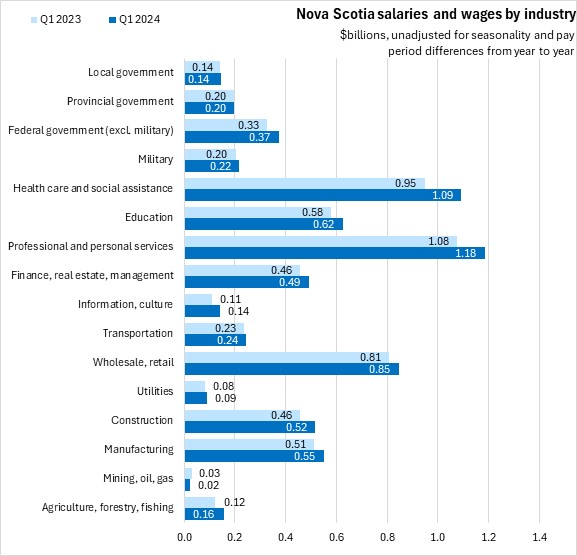
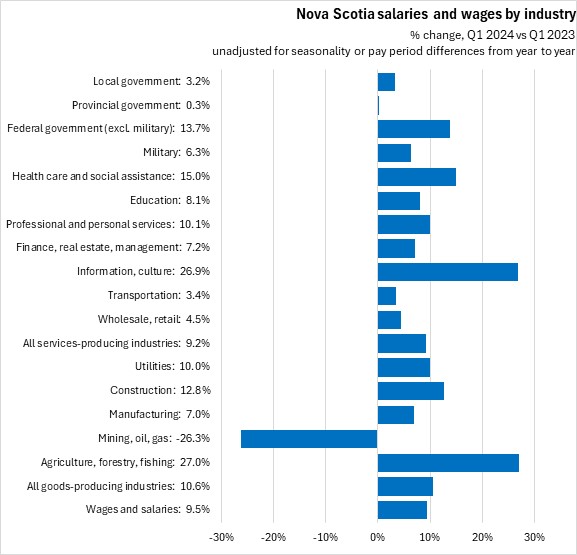
Trends
In each of June 2022 and June 2023, there were spikes in employee compensation, followed by corrections. After the June 2023 spike (associated with an extraordinary payment in military wages and salaries), growth in Nova Scotia employee compensation resumed growing in line with trends.
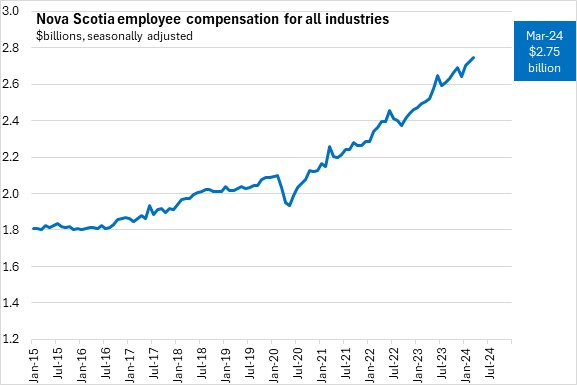
Year-over-year (March 2024 vs March 2023)
On a year-over-year basis, employee compensation increased 9.6% in March 2024.
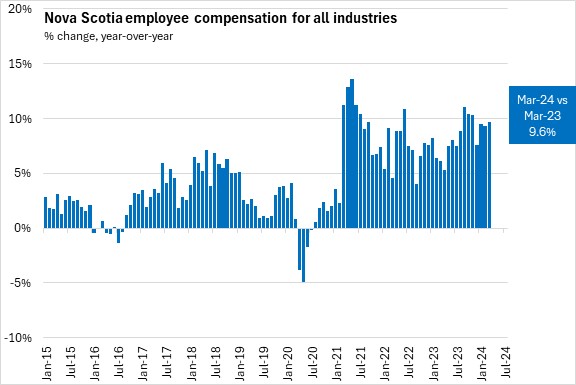
Source: Statistics Canada. Table 36-10-0205-01 Wages, salaries and employers' social contributions (x 1,000)
<--- Return to Archive